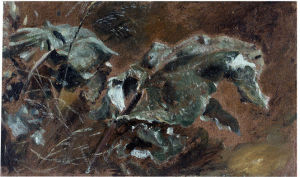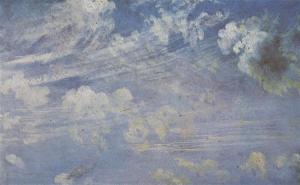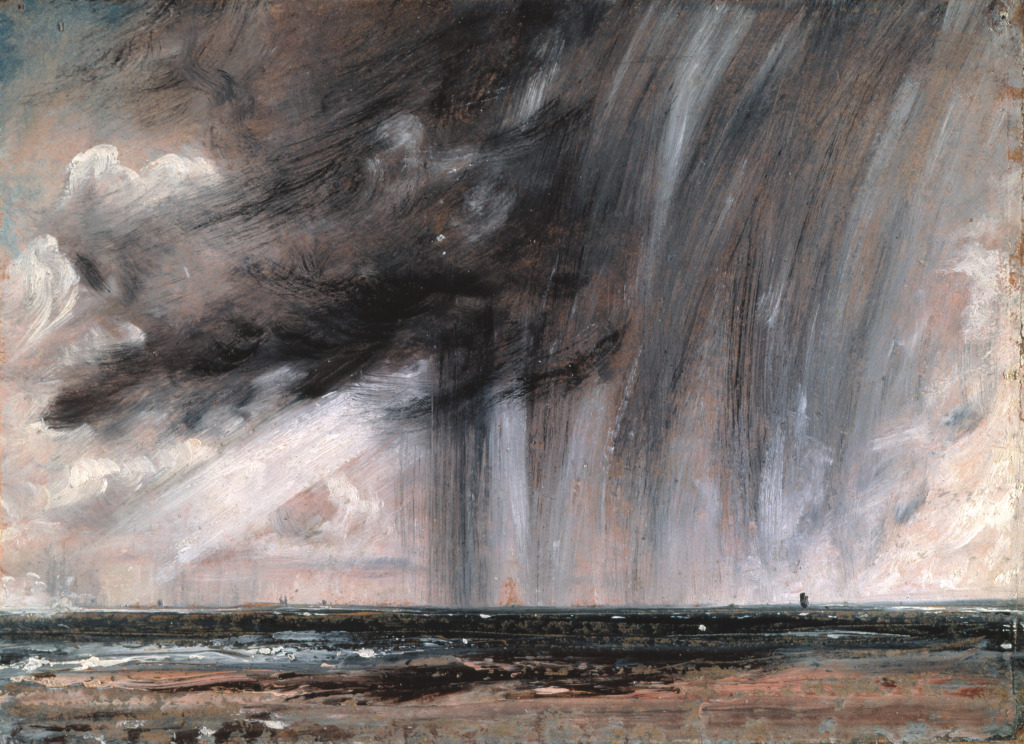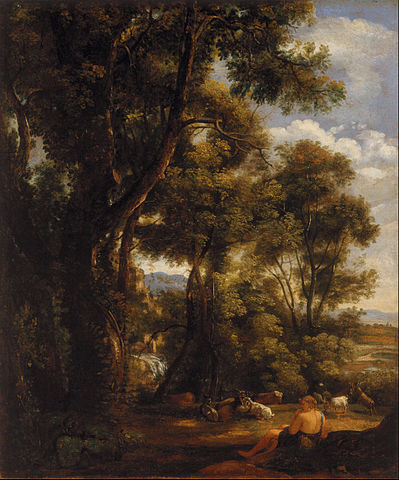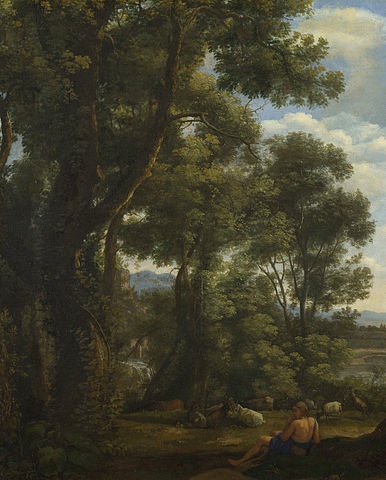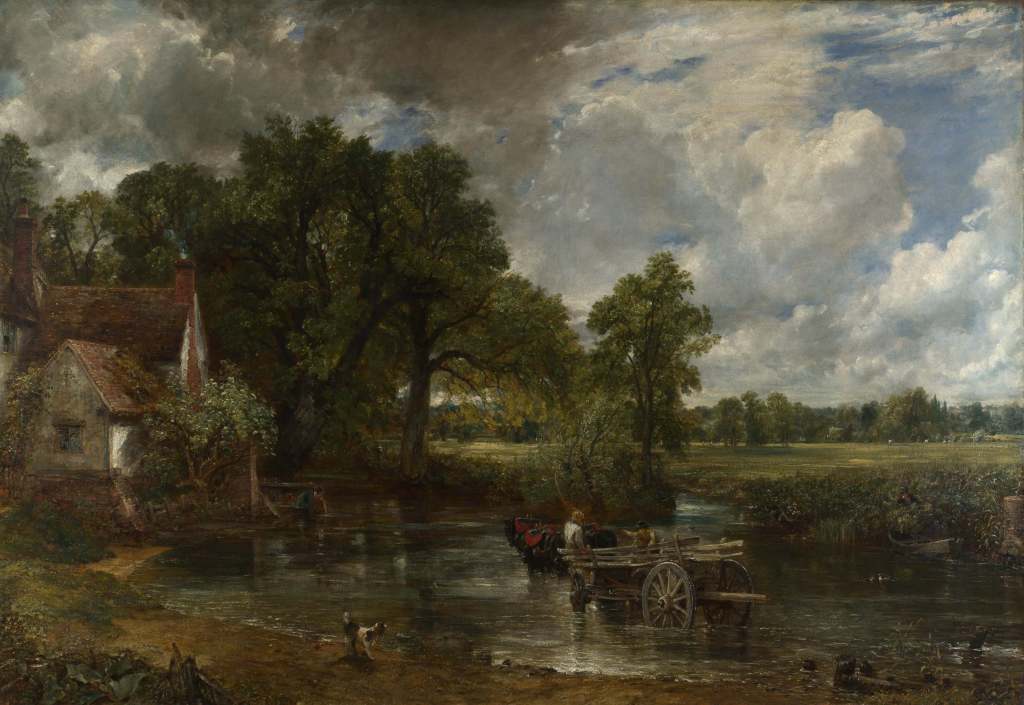John Constable: The Making of a Master
20 September 2014 – 11 January 2015
From looking at a few well known works you would think that John Constable (1776 – 1837) was an ordinary painter, churning out perfect images of the English countryside one after another. Picturesque but unremarkable perhaps? Who knew that he was a revolutionary, constantly experimenting and rebelling against the art establishment? Being English gives me an affinity with Constable, despite having never been to the places in his landscapes. It is a feeling he evokes, a love of nature, of the land and the people. Putting him in context is so important as it shows us how ground-breaking and completely new his ideas were, which is exactly what this exhibition does.
The scene is set with Constable’s background. A telling Self Portrait (c. 1799-1804) gives the impression of an enthusiastic young artist. He looks very English, a real romantic. Bright-eyed and ruddy-cheeked he is an outdoorsy kind of fellow. His home county Suffolk, often referred to as Constable Country, was his first and lifelong muse. Golding Constable, the artist’s father, was a corn merchant and country squire. His elder brother had a mental disability which meant that John was always meant to take over his father’s business. As a boy art had been a hobby of his, but when local landowner and art collector Sir George Beaumont introduced Constable to the Old Masters things got serious. Among his treasures was a Claude Lorrain painting which caught Constable’s attention. This was the artist that was to inspire Constable the most throughout his career. At the time of this portrait in 1799 he left his beloved homeland for London and entered the Royal Academy of Arts. It soon became clear that landscape painting was what he wanted to do. However the academy did not consider it a worthy subject. Grand themes from history, religion and myth were held in the highest esteem as they demanded vision and imagination of the artist. Portraiture was next in rank, requiring insight. Still life and landscape were seen as the lowest forms of art, being nothing but imitation. Constable’s fellow RA student J. M. W. Turner chose to depict landscape, but as Claude before him he made them worthy of exhibiting by giving them a genre. Constable remained steadfast, boldly stating that ‘the great vice of the present day is bravura, an attempt to do something beyond the truth’. Even as a pupil he was confidently authoritative.
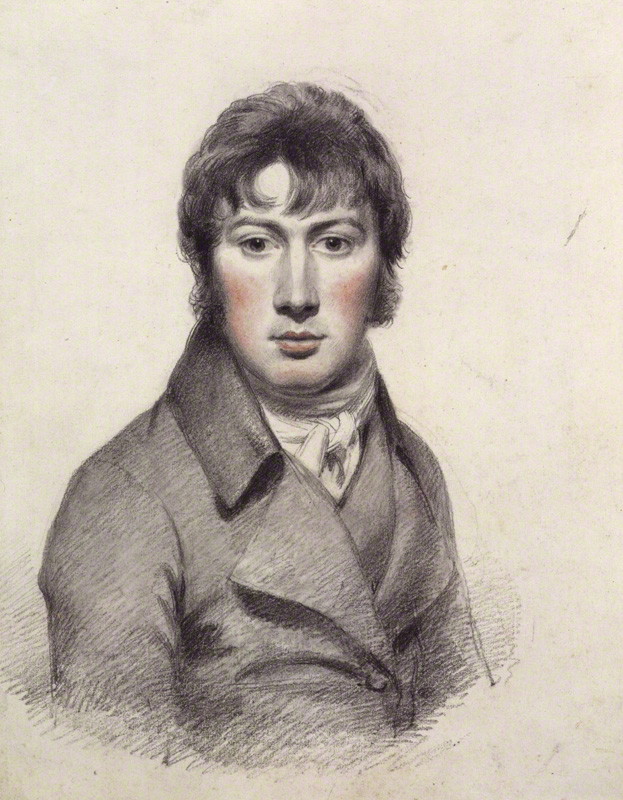
Self-portrait (c. 1799-1804) by John Constable, pencil and black chalk heightened with white and red chalk, National Portrait Gallery, London
Oil sketches such as Study of Cirrus Clouds (c.1822) and Study of Foliage (c.1828) are depicted with botanical and meteorological accuracy, showing a scientific and studious side of Constable’s character. When sketching like this he usually made notes of the day’s weather conditions order to document the seasonal and atmospheric conditions accurately. ‘Painting should be understood…as a pursuit, legitimate, scientific and mechanical’ he said. Thomas Foster’s Researches About Atmospheric Phaenomena accompanied Constable while painting en-plein-air, providing the information required to identify the clouds like in Study of Cirrus Clouds below. The sky held meaning for him, and the greater portion of his canvases were nearly always dedicated to it. He said the sky was ‘the key note, the standard of scale, and the chief organ of sentiment’ in landscape painting. To Constable the reality of nature was so beautiful that imagination was not required, just the ability to capture it. He knew the landscapes he painted intimately and this comes through in his works. ‘Never do anything without nature before you’ he advised ‘see those weeds and the dock leaves?…I should not attempt to introduce them into a picture without having them before me’. His studies of foliage gave him the visual information needed to work into his large canvasses done in the studio. It is worth noting that he used oil paints for his sketches, which was not really the done thing at the time.
Rainstorm over the Sea (1824-8) was a work that immediately drew me in. It is so modern, so energetic and vivacious in its brushwork, qualities which are not usually translated from preparatory study to finished works. It feels transient, that if you blinked the scene would change. I love the exposed areas of paper and the fact that you can trace the hairs of every brushstroke. The unmixed stormy colours and blobs of pure white and black show the speed of Constable’s activity, attempting to get it all on paper as quickly as possible. It speaks of the violence of nature, a sublime uncontrollable force. Despite the small size of the piece it dwarfs the viewer. It is not unlike Turner’s images of turbulent skies. There could perhaps be a personal narrative to it too. When Constable’s wife and childhood sweetheart Maria died in 1828 at the age of 41 he wrote to his brother that ‘I shall never feel again as I have felt, the face of the World is totally changed to me’. Perhaps some of Constable’s mourning and despair is in this painting.
Side-by-side in the gallery hang Claude’s Landscape with A Goatherd and Goats (1636-7) and Constable’s facsimile of it done nearly 200 years later. Unfortunately the images below do not do the paintings justice. In the flesh the colours are almost the same, compositionally they are identical, down to the last leaf. Perhaps Constable’s use of light is purer, and if you examine closely there is a detail on the right which differs slightly. You can see why this appealed to Constable; a scene of pastoral idyll with a variety of plants and trees captured in photographic detail. But even Claude’s didn’t paint nature for its own sake. He includes a human addition to give the painting a subject, even if it is a lowly goatherd. A man after his own heart Lorrain said ‘I paint the landscape, the figures are gratis’. He presumably did this reluctantly to please a patron or attract a buyer. But Constable refused to apply any moral, religious or mythological subjects to his own works. Unfortunately his unwavering commitment to paint what he liked meant that he was never financially successful.
When first exhibited in 1821 The Hay Wain (or Landscape: Noon as it was originally called) was harshly criticised as merely ‘water, air and sky’, the ‘mirror of nature’. Yet when exhibited two years later in Paris Salon it won a medal. The Romantic painter Delacroix retouched his entry upon seeing Constable’s, finding fault in his own work upon comparison. Seeing this painting in the flesh was a bit of a revelation for me. I had seen it hundreds of times in books, on TV and lecture slides. But in reality it is so beautiful. Again the reproduction below is very poor, it is lighter and brighter. On display beside the Hay Wain is a full-size sketch preparatory sketch. In an attempt to grab the attention at the Summer Exhibitions the artist decided to increase the size of his canvases, which is why his works went from modest size canvases to larger ones, which he called ‘six-footers’. The sketch shows his workings, the creative process of adjusting the light and figures within the image. The finished work, while awesome, does lack the vitality of the sketch. This was his home, a landscape which he painted frequently in his youth. He wrote ‘I should paint my own places best’, and that is precisely what he has done here. We see his dock leaves in the foreground, lovingly detailed. The Hay Wain glorifies rural life and labour. Cities were where industrial revolution, political and social unrest happened. For Constable country living was virtuous, honest and healthy. Whether this painting reflected reality or is it just nostalgia could be argued, as the countryside did not go untouched by the industrialisation and war of the time. The sky moves as you look at it, the patches of light on the field beyond and reflections on the water are animated. The composition is perfect, and the fact that it was only tweaked slightly from the accompanying sketch is testament to Constable’s artistic eye.
It was said that Constable ‘died as he lived’, surrounded by art’. He was a great collector and owned over 5000 prints, some of which were on display in a room dedicated to them. They were mostly of landscapes of the masters that he admired, Claude, Poussin, Rubens and van Ruisdale. It was these artists that were his real tutors, his skills were developed by copying them and by striving to their level of ability and artistic invention. The Dutch influence in his landscapes is undeniable, and runs deeper than the similarity to the land of Suffolk. Constable’s works possessed the same humbleness which is found in the art of Northern Europe, which he paired with the compositional perfection of his French peers. The RA seems to have never fully appreciated Constable’s genius, and it must have been frustrating for him that his contemporary Turner enjoyed fame while he did not. Despite this Constable’s works have become a part of the English consciousness; he was all about honesty and capturing his home, a sentiment which we can all relate to. I was amazed by this exhibition, it really got the visitor close to the artist. What struck me most about seeing his works collectively was the elegance and balance of his canvases. Nothing could be taken away or added to them without causing ruin. His paintings were often criticised for looking clumsy and unfinished, but this is unprecedented. He elevated landscape painting, proving that not only was it a worthy subject but the worthiest as it was derived from nature and therefore truth. I made so many notes throughout the exhibition, there are dozens more paintings I would like to talk about but I have gone on too long. The show certainly affirms Constable as master, a reputation which he forged out for himself against all odds and against all rules. He said that ‘painting is another word for feeling’, ‘we see nothing until we understand it’, and that is very true.

